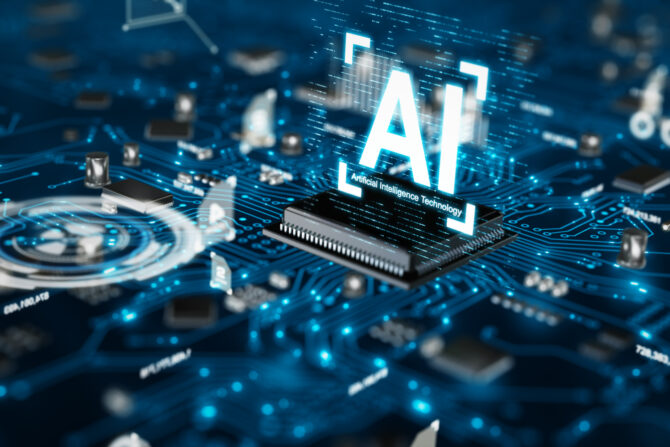
AI software to reach $279B in 2027
EP&T Magazine
Automation / Robotics Electronics Engineering AI artificial intelligenceIDC forecasts worldwide revenue
A recent forecast from International Data Corporation (IDC) shows that the worldwide artificial intelligence (AI) software market will grow from $64 billion in 2022 to nearly $251 billion in 2027 at a compound annual growth rate (CAGR) of 31.4%. The forecast for AI-centric software* includes Artificial Intelligence Platforms, AI Applications, AI System Infrastructure Software (SIS), and AI Application Development and Deployment (AD&D) software (excluding AI platforms). However, it does not include Generative AI platforms and applications, which IDC recently forecast will generate revenues of $28.3 billion in 2027.
A recent IDC survey found that, in the next 12 months, roughly a third of respondents believe that organizations will prefer to buy AI software from a vendor or use in-house support alongside vendor-supplied AI software for specific use cases or application areas. This indicates a growing demand for AI solutions and highlights the need for customized approaches based on individual business requirements.
“The momentum behind investments in AI and automation technologies remains unwavering despite economic uncertainty and shifting market dynamics. Businesses are realizing that utilizing cutting-edge technology is not only a strategic necessity but also a crucial factor in achieving long-term success. Despite potential challenges and risks, organizations are confident that adopting AI will continue to be crucial for future proofing their business operations and remaining ahead of the competition,” said Raghunandhan Kuppuswamy, research manager, Artificial Intelligence and Automation Research at IDC.

Source: Adobe
AI Applications is currently the largest category of AI software, accounting for roughly one third of the market’s overall revenue in 2023. The category includes collaborative, content workflow and management, enterprise resource management (ERM), supply chain management, production and operations, engineering, and customer relationship management (CRM) applications. Revenue growth in the AI Applications category will trail the overall market with a five-year CAGR of 21.1%.
The second largest category in terms of 2023 revenue is Artificial Intelligence Platforms. With the second fastest growth rate over the 2023-2027 forecast period (a 35.8% CAGR), AI Platforms will be the largest revenue category for most of the forecast. AI Platforms facilitate the development of artificial intelligence models and applications, such as intelligent assistants that can mimic human cognitive abilities.
AI Application Development and Deployment
The two smallest categories – AI Systems Infrastructure Software (AI SIS) and AI Application Development and Deployment (AI AD&D) software – will both grow revenues faster than the overall market with five-year CAGRs of 32.6% and 38.7%, respectively. The AI SIS category benefits from its integration with existing software systems, allowing organizations to derive valuable insights from vast amounts of data to make informed decisions and optimize operations. The category includes analytics, business intelligence software, data management, integration, orchestration, application development, software quality, life-cycle software, and application platforms. The AI AD&D category includes analytics and business intelligence software, data management, integration and orchestration, application development, software quality and life-cycle software, and application platforms.
“The AI landscape is changing rapidly. Convergence of traditional AI with Generative AI will lead to cutting-edge solutions that combine decision efficacy with creative ingenuity,” said Ritu Jyoti, group vice president, Worldwide Artificial Intelligence and Automation market research and advisory services at IDC. “As businesses continue to invest in AI, they should be prepared to address challenges and prioritize ethical considerations to maximize the long-term ROI.”
—————————-
* Note: IDC defines artificial intelligence (AI) software as AI-centric software. AI-centric applications must have an AI component that is crucial to the application – without this AI component the application will not function. IDC also recognizes a second type of AI software – AI noncentric software. In AI noncentric applications, the AI component is not crucial or fundamental to the application. In other words, the application will function without the inclusion of the AI component. This enables the inclusion of applications that are enhanced by AI capabilities but not exclusively used for AI functions.
